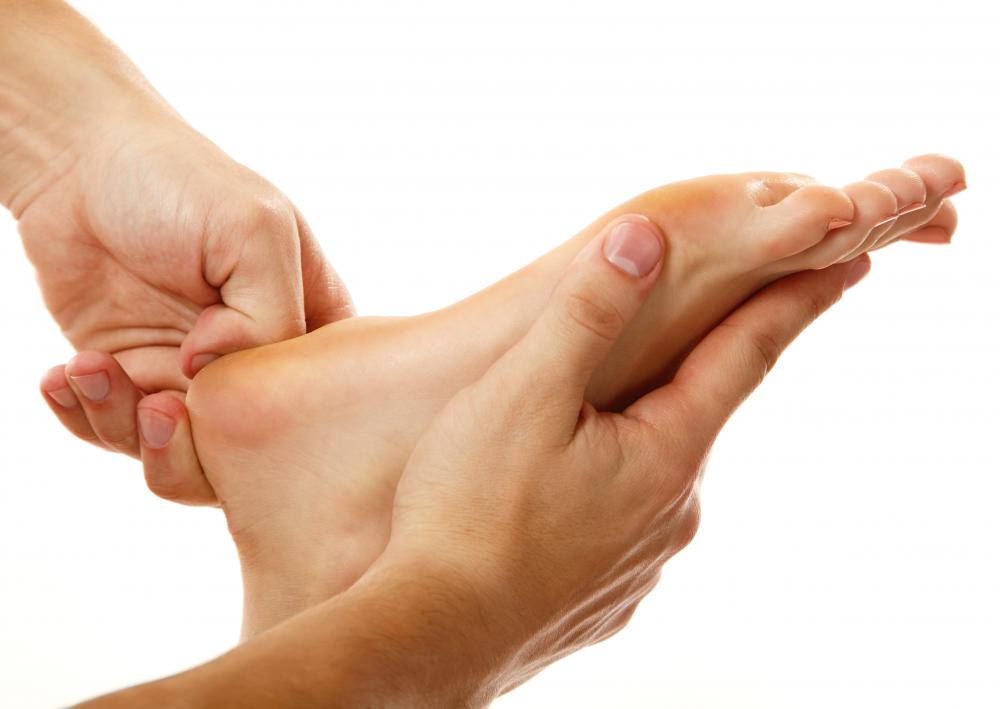At WiseGEEK, we're committed to delivering accurate, trustworthy information. Our expert-authored content is rigorously fact-checked and sourced from credible authorities. Discover how we uphold the highest standards in providing you with reliable knowledge.
How do I Become a Reflexologist?
Taking classes, practicing techniques, attending workshops, and becoming board certified are all important steps for someone who wants to become a reflexologist. Reflexologists follow a map of the body and apply pressure to specific areas of a person’s hands, feet, or outer ears to heal other areas of the body. It is important to note that every state and country has different laws regarding reflexology. In fact, in some areas reflexology is not recognized as a legitimate practice at all. Consequently, no formal training is legally required.
There are many schools in the United States, Europe, and Asia that offer classes in reflexology. In some cases, the schools are massage therapy schools that offer reflexology classes as part of the curriculum. In other cases, the entire institution is geared toward helping a student become a reflexologist. There are even home-based programs for a person who wants to become a reflexologist, but who does not want a structured program. A solid reflexology program typically will offer classes in anatomy, ethics, physiology, business practices, and reflexology techniques.

In the United States, it is possible to become board certified in reflexology. This means that a person who wants to become a reflexologist has met certain standards for knowledge and skills. The person must pass an exam and complete a hands-on course in reflexology, amounting to at least 110 hours. Consequently, if a person wants to become certified, the home-based courses generally will not count toward the 110 hour hands-on prerequisite.

There are also international standards for reflexology. Across most of Europe, a person who wants to become a reflexologist must complete nearly 350 hours of study—much more than required in the United States. It is possible for someone to receive their education outside the United States and become certified inside the United States as well.
Beyond class work, a person who wants to be a reflexologist should read and study current books on the subject. Having a current and expansive library is considered beneficial for both the reflexologist and the client. There are also workshops where advanced reflexology techniques are taught to those who want to become a reflexologist.
Since laws vary from location to location, it is up to the individual who wants to be a reflexologist to learn the laws of her area. Just because she becomes certified, does not mean she can practice legally. In some areas, she must have a massage license and, in other areas, an adult entertainment license before she can legally practice reflexology. Also, some areas prohibit reflexologists from working out of their homes, while others have no laws at all.
AS FEATURED ON:
AS FEATURED ON:












Discuss this Article
Post your comments